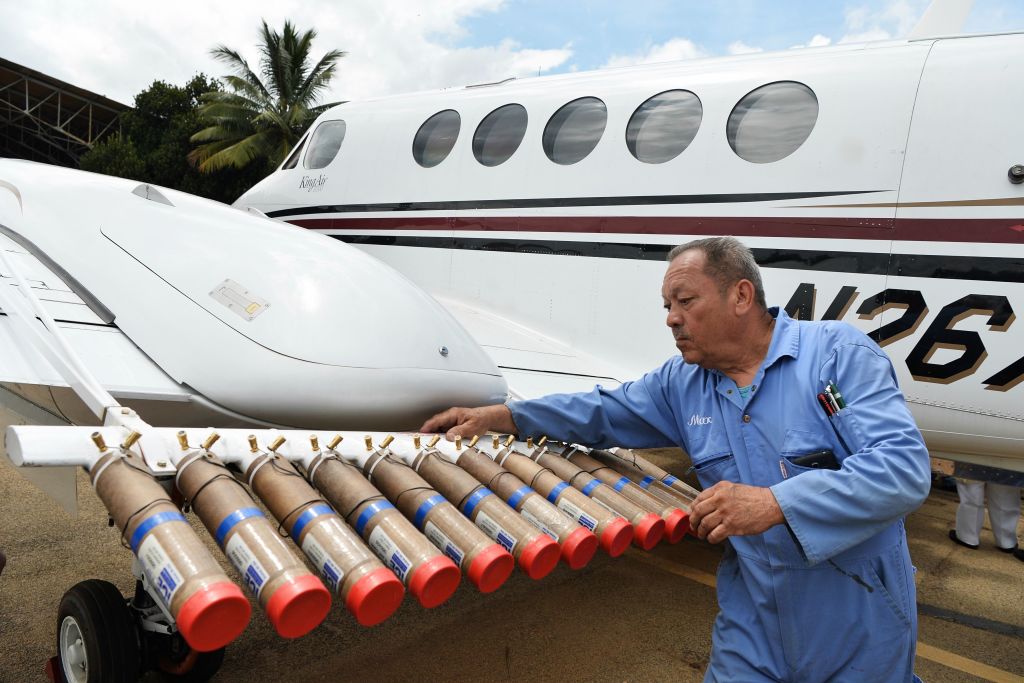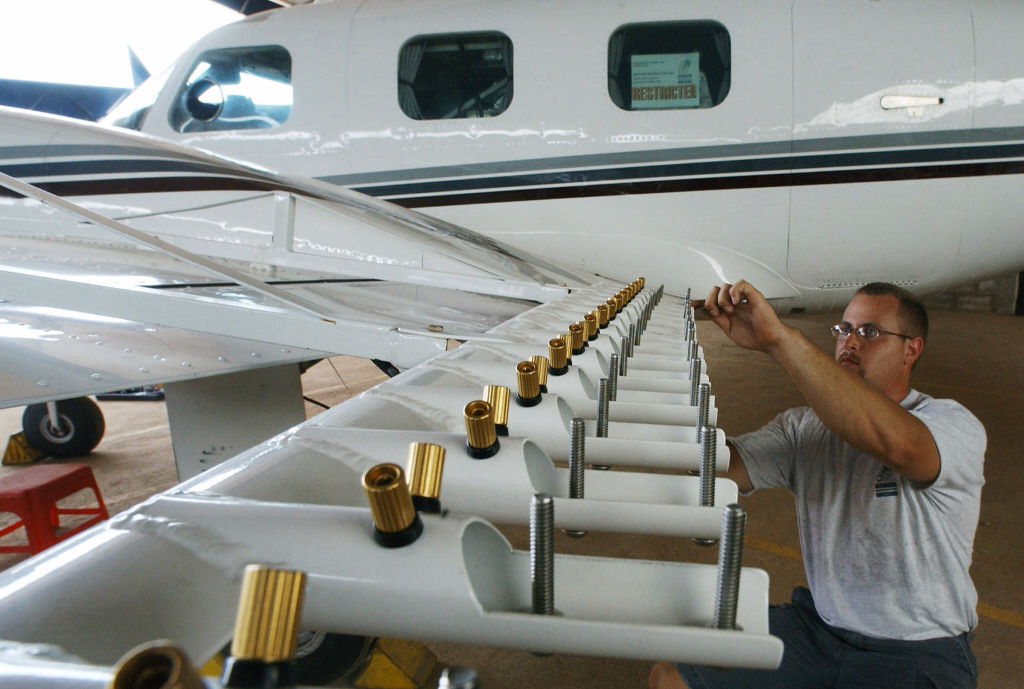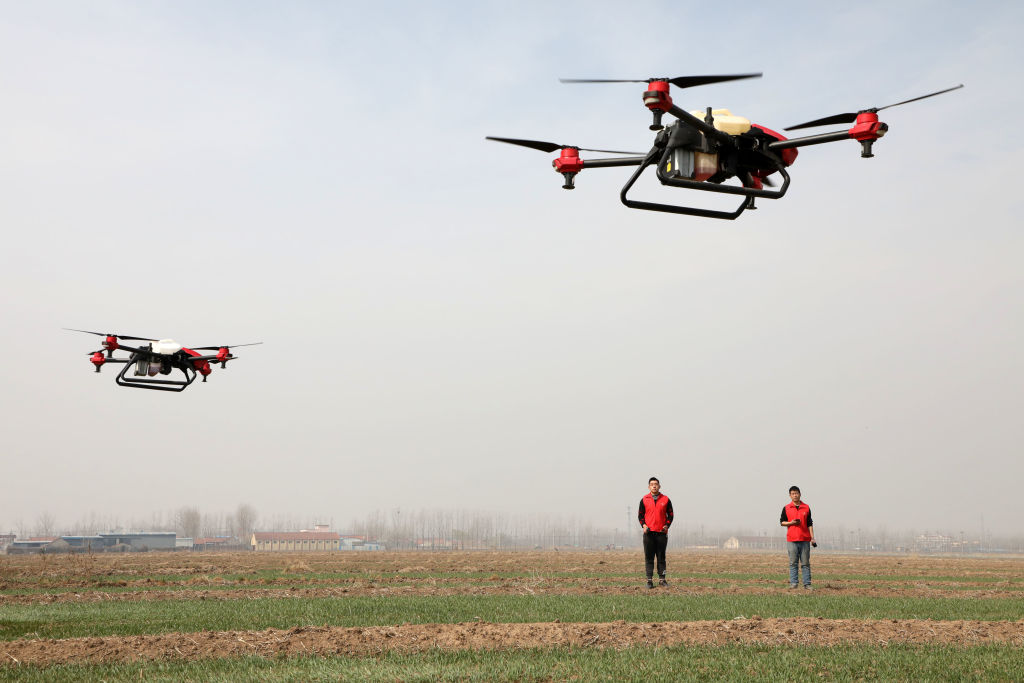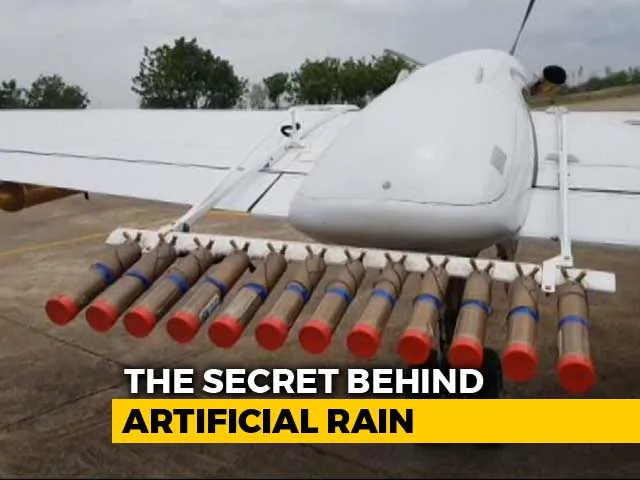With temperatures on the rise and heatwaves pounding the United Arab Emirates, it will try almost anything to cool things down. Anything, like using drones to shoot electricity at clouds to artificially make rain. Just like using drones as flying cars, flying drones seeding clouds is a new take on an old idea.
Environmentally, using drones to zap clouds is better than salt flairs

A technician fits canisters containing Silver Iodide, Sodium Chloride, and Potassium Chloride onto a BQ-100 Beechcraft aircraft for the cloud seeding | MANJUNATH KIRAN/AFP via Getty Images
And that old idea; cloud seeding, came with lots of concerns, both environmentally, and in terms of cost and effectiveness. And it can be dangerous for the pilots. Going in and out of clouds means flying through both updrafts and downdrafts, bouncing the planes around.
Salt flairs are what has traditionally been fired into clouds. The UAE had over 200 runs just last year. National News reported that 2020 saw an excess of rainfall totals as a result. A typical year sees less than four inches of rain.
In all, the UAE shot almost 5,000 salt crystal flairs into rain-bearing convective clouds. A high-tech collection of radars monitor the atmosphere. Data is reviewed and once seedable clouds are detected a team of planes are sent into the clouds. The UAE has been conducting cloud seeding experiments since 2004 according to the BBC.
The US seeds clouds in eight states each year

We do it in the US, as well. Cloud seeding has increased snowpacks in the Nevada mountains by more than 10-percent. Cloud seeding in Wyoming saw a 5-10-percent snowpack increase as well. At least eight states in the US use some form of cloud seeding.
But this is a new approach where drones go into the clouds and shoot electricity at them triggering rain production. Electrical charges on cloud droplets cause water droplets to merge. When large enough they fall as rain.
The UAE gets most of its water from underground springs. But low rainfall numbers, excessive heat, and high evaporation is depleting the groundwater. Now, seeding projects are happening in the UAE’s northeast regions, where there are cumulus clouds in the summer.
Canada seeds clouds to reduce the size of hail

In Canada, clouds are seeded in the summer for a completely different reason. Large hail develops there causing lots of damage. By seeding the clouds it produces more rain and hail, but the hail is smaller. As global warming continues, Canada has seen more days of rain in the summer.
Seeding with drones is also being done for planting in forests and in agriculture too. With fires ravaging forests, a quicker, less expensive way to reforest is by dropping seeds. Drone swarms are flown in pre-programmed routes. Each eight-foot drone carries 57 pounds of seeds laced with a potent pepper. This keeps squirrels from eating them.















Add Comment